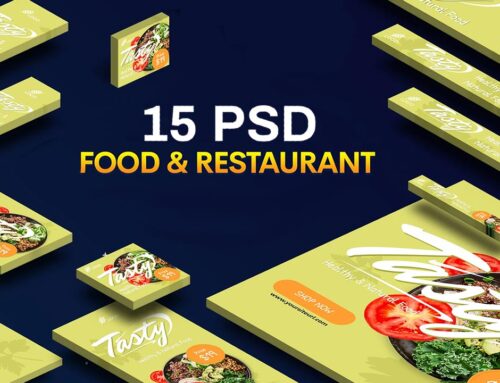Introduction
In the constantly evolving world of digital marketing, producing high-quality and relevant content is more important than ever. As businesses strive to create content that resonates with their target audience, one tool has proven indispensable in guiding the process: the content brief. But why is it so crucial, and what is the psychology behind its significance? This article delves into the reasons why you should consider using a content brief, discussing its impact on the content creation process, and exploring the psychological factors that make it an essential part of any successful content strategy.
Humans are naturally drawn to stories and information that engage our emotions and address our needs. This is where the psychology of content creation comes into play. A well-crafted content brief ensures that your content speaks to your audience’s psychological needs by providing clear goals, audience insights, and guidelines for tone and messaging. By understanding and catering to the cognitive and emotional triggers of your target audience, you can create content that captures their attention, evokes the desired emotional response, and ultimately drives them to take action.
In this comprehensive guide, we’ll discuss the benefits of using a content brief, including how it ensures clarity and direction, improves efficiency, enhances collaboration, increases content quality, and supports your overall content strategy. We will also delve into the psychological aspects of content creation and explore how a content brief helps tap into your audience’s emotions and cognitive processes, fostering a deeper connection with your brand.
What is a Content Brief?
A content brief is a document that outlines the goals, audience, and key elements of a piece of content. It acts as a roadmap for writers, editors, and content marketers, providing direction and clarity to ensure the final product meets its objectives.
Key Components of a Content Brief
- Content Goals: The primary purpose and desired outcomes for the content
- Target Audience: The ideal reader or viewer, including their demographics and pain points
- Tone and Voice: The style and personality of the content
- Key Messages: The main takeaways or points you want to communicate
- Keywords and SEO: Relevant keywords and phrases for search engine optimization
- Call to Action (CTA): The action you want the audience to take after consuming the content
- Structure and Format: The preferred layout and organization of the content
Benefits of Using a Content Brief
Ensures Clarity and Direction
- Providing a content brief helps the content team clearly understand the goals and objectives of the project
- It acts as a roadmap, ensuring everyone is aligned and working towards the same outcomes
- Prevents misunderstandings and miscommunication, leading to a smoother content creation process
Improves Efficiency
- By setting clear expectations and requirements, a content brief helps reduce the time spent on revisions
- Provides a clear scope, helping content creators avoid overwriting or missing crucial information
- Allows for better planning and resource allocation, ensuring deadlines are met
Enhances Collaboration
- Encourages team members to share ideas and contribute to the content’s direction
- Facilitates communication between content creators, editors, and marketing teams
- Fosters a culture of collaboration and shared ownership of the content
Increases Content Quality
- A content brief helps ensure that the final product meets its objectives and resonates with the target audience
- Provides a framework for incorporating relevant keywords and phrases, boosting SEO performance
- Ensures consistent tone and voice, which helps build brand identity and credibility
Supports Content Strategy
- Content briefs help align individual content pieces with broader marketing goals and strategy
- Ensures that each piece of content serves a specific purpose and contributes to the overall content plan
- Helps identify gaps in content coverage and provides opportunities for optimization
The Psychology Behind Using a Content Brief
The psychology of content consumption plays a vital role in understanding why content briefs are essential for creating impactful content. By examining the psychological principles that govern human behavior, we can better understand how a content brief addresses these principles and enhances the effectiveness of your content.
Cognitive Load Theory
- Cognitive load refers to the amount of mental effort required to process information
- A content brief helps minimize cognitive load by providing a clear structure, format, and organization for the content
- This enables your audience to easily comprehend the information, making it more memorable and engaging
Emotional Appeals
- People are often driven by their emotions, and content that evokes an emotional response is more likely to be shared and remembered
- A content brief helps you identify and incorporate the appropriate emotional triggers for your target audience, making the content more persuasive and impactful
- By understanding the psychology of emotions, you can create content that connects with your audience on a deeper level
Social Proof
- Social proof is a psychological phenomenon where people look to others’ actions to guide their own behavior
- Incorporating social proof elements (e.g., testimonials, case studies) in your content brief can make your content more credible and persuasive
- This helps build trust with your audience and motivates them to take the desired action
Reciprocity
- Reciprocity is a psychological principle that states people feel obligated to return favors and are more likely to take action when they’ve received something of value
- A content brief helps you create valuable content that addresses your audience’s needs and offers solutions to their problems
- By providing value through your content, you can encourage your audience to reciprocate by engaging with your brand, sharing your content, or taking the desired action
The Power of Storytelling
- Humans are hardwired to engage with stories, as they help us make sense of the world and connect with others
- A content brief helps you craft compelling narratives by outlining key messages, tone, and structure
- By incorporating storytelling elements in your content, you can create an emotional connection with your audience and make your message more memorable
Incorporating these psychological principles into your content creation process through the use of content briefs enables you to create more effective, engaging, and persuasive content. Understanding the psychology behind content consumption allows you to better connect with your audience and ultimately drive better results for your business.
Final Thoughts
Using a content brief is not only a practical tool for streamlining the content creation process but also a powerful means of tapping into the psychological factors that drive audience engagement and action. By understanding the cognitive and emotional triggers that influence your target audience, you can create content that resonates with them on a deeper level.
A well-crafted content brief ensures clarity, improves efficiency, enhances collaboration, increases content quality, and supports your overall content strategy. More importantly, it incorporates the psychological principles that govern human behavior, such as cognitive load theory, emotional appeals, social proof, reciprocity, and the power of storytelling. By addressing these principles, your content will be more engaging, persuasive, and memorable, ultimately driving better results for your business.
As you plan and create content, remember the importance of incorporating psychological elements into your content briefs. Doing so will help you forge stronger connections with your audience, boost the effectiveness of your content, and contribute to the overall success of your marketing efforts.








